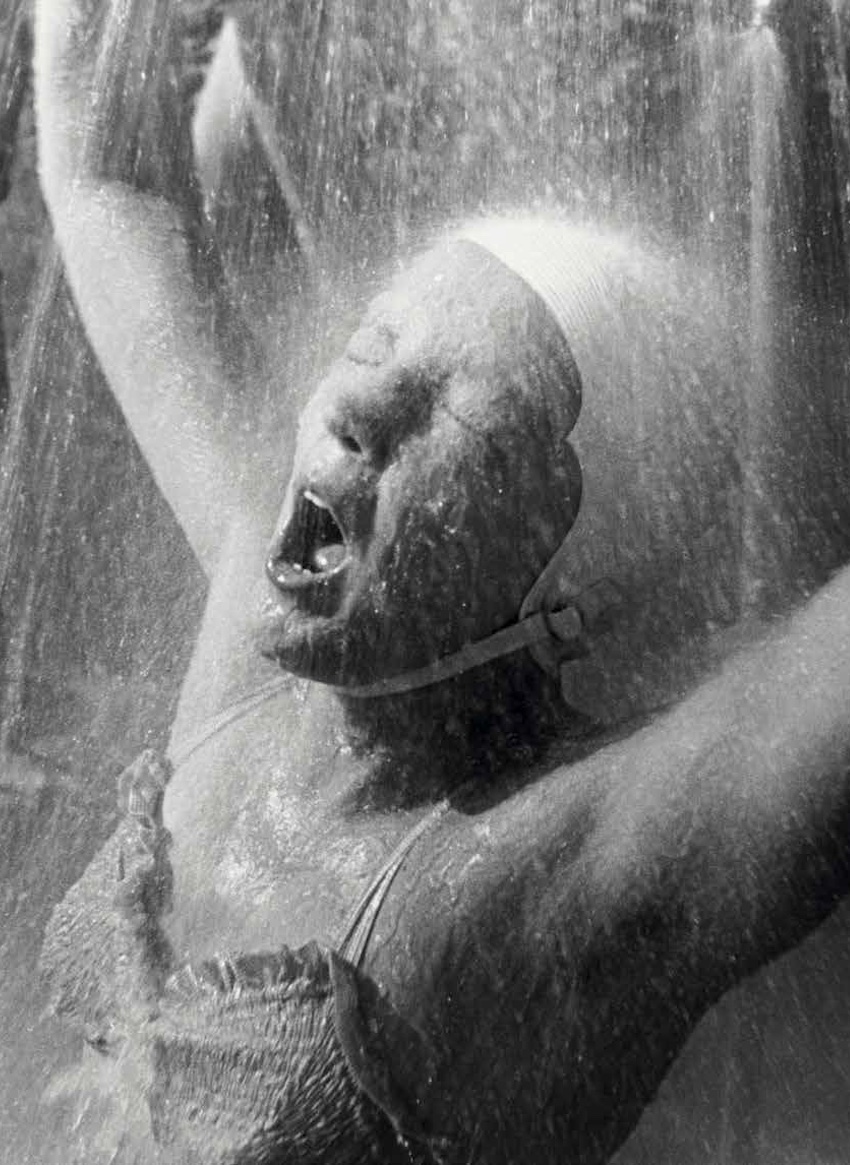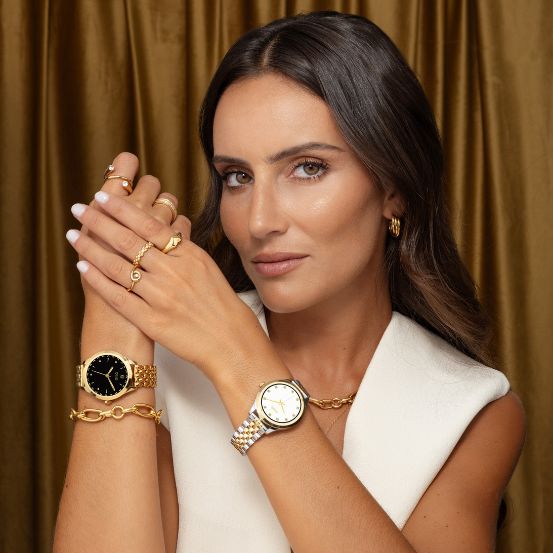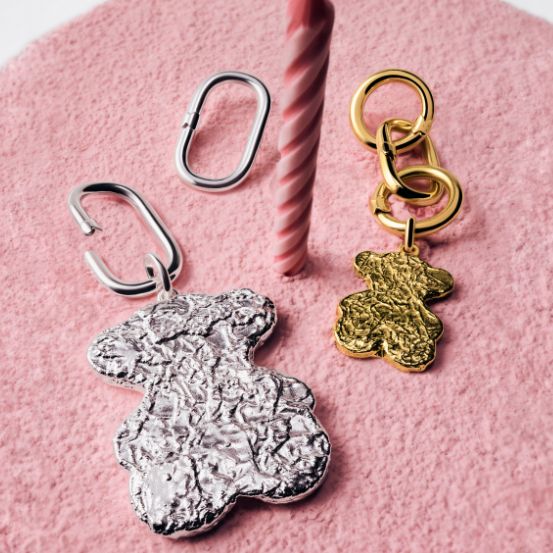Winners Never Quit
As with almost everything in life, there’s always a catch. In a healthy lifestyle, sport plays a very important role: it is good for the heart, lungs, brain... and the skin is no exception. However, there are also negative aspects that can trigger or worsen some skin problems. So, many times, “prognoses only at the end of the game!”
In the summer of 1977, when Andy Warhol went to photograph Muhammad Ali at the boxer’s training complex - Fighter's Heaven - Ali was not feeling his best. According to Victor Bockris, writer and friend of Warhol, Ali suggested that Warhol come back in a few weeks, when, according to the boxer, he would be “a little prettier.” Warhol insisted, producing the material for his silkscreens of Ali – perhaps the most well-known work in his Athletes portfolio, intersecting the seemingly distinct worlds of sport and beauty, highlighting the relationship between physical prowess and aesthetic appeal.
Beauty and sport have been age-old adversaries but also true teammates. More and more cosmetic brands are having high-performance athletes as ambassadors. People chosen for their strong and inspiring personalities, but also because they inevitably expose their skin to extreme wear and tear, bringing their greatest vulnerability to the podium.
Although the positive impact of physical exercise on various vital organs is well-documented, there is less scientific data to support this theory concerning the skin. Nevertheless, many studies have shown that physical exercise can increase mitochondrial biogenesis – fundamental for cellular health and metabolic function – contributing to the maintenance of skin structure.
The skin is the largest organ of the human body and its primary function is to act as a physical, chemical, immunological, and microbiological barrier. It is the part of the body that comes into direct contact with the environment, and its homeostasis must be guaranteed for everything to function well. The proper functioning of the skin is essentially influenced by the supply of blood, oxygen, and water.
Physical exercise brings numerous benefits: it improves cardiovascular health, stimulates the immune system, helps manage stress, and promotes psychological well-being. Therefore, it improves the overall function of the body and directly and indirectly influences the quality of the skin. But how are the real benefits of sport translated into the skin?
Exercise generally improves skin health, making it younger and more resilient, regardless of age. It increases blood flow, promotes better cellular nutrition, and allows for more effective elimination of toxins from the body, although there is no scientific evidence that exercise has a direct detox effect on our skin. The sensation of detoxified skin occurs because of increased blood supply and better tissue oxygenation during exercise, which gives a particular glow that we inevitably associate with better health and that many brands try to imitate with their products. Regular exercise mitigates dermal aging, improving skin thickness and elasticity. Lack of physical activity is a proven risk factor for sarcopenia: the loss of muscle mass and skin elasticity that occurs with aging, but which is mitigated by exercise. Sport also increases collagen production, essential for skin firmness and cellular renewal, and improves hydration in the stratum corneum, with perspiration having a proven anti-aging effect. Moderate sports practice has an antioxidant action and helps maintain healthy levels of the hormone cortisol, related to stress. A high level of cortisol affects skin quality, promoting the appearance of pimples, changes in collagen fibers, and, consequently, wrinkles and sagging. The reduction of stress and the release of endorphins also promote a more peaceful and refreshing sleep, which translates into better skin regeneration at night and, consequently, an immediate relief of marks like dark circles or puffiness. Stress is an aggravating factor for chronic diseases like acne, eczema, rosacea, or psoriasis.
Despite all the known benefits, too much of a good thing is a bad thing! Anything in our body that exceeds necessary levels is considered a potential toxin, and the same goes for sports which, when in excess – without adequate recovery time – accelerates cellular wear that impacts the skin at various levels. Similarly, if we do not follow certain pre- and post-workout steps, our skin can become more fragile and even ill. Today, with so many sports modalities and different schedules to practice them, the diversity of cosmetic possibilities ends up complicating and limiting one-size-fits-all generalizations on this matter, but there are unshakeable logical consensuses that we can all apply to our routine before, during, and after training.
Whatever the sport, it is highly recommended to clean the face before starting exercise. There are several reasons that justify this need, beyond the real constraint of sweat often being incompatible with makeup and hindering training. No one wants makeup running into their eyes! Makeup, sweat, or debris on the face are not beneficial for the health and appearance of the skin, so there are three steps to take before entering the field: cleansing (or double cleansing, if the skin is made up, ideally with an oil-based product, followed by a water-based one); hydration, with a light-textured moisturizer, and photoprotection with a water-resistant sunscreen that will also resist sweat. Sun protection should be done whenever there is sun exposure, whether outdoors or near a window – because a large part of UV rays can penetrate through window glass – and should be reapplied whenever necessary. If having a “bare” face is a hindrance to training in public, a BB Cream or a tinted sunscreen can be used. Hair should be tied back or kept away from the face to avoid contact with the skin. Deodorant is also necessary for many people who inevitably see increased sweat levels during sports practice and it does not affect sweat flow; it only helps control odors. If sweat production is really excessive, antiperspirants can be the best ally. Throughout the sports period, towel hygiene will also make a difference to the skin.
There are two goals in the post-workout cosmetic routine: restoring skin hygiene and ensuring hydration. Although sweat is absolutely normal during exercise – and often proves our dedication to it – sweat should not remain on the skin at all. It can not only cause pore obstruction if it stays too long, but it can also irritate the skin due to its salt content and promote alterations in the skin microbiome, immediately aggravating existing pathologies like eczema or psoriasis. Depending on the time of day we exercise, we can follow the full routine or reduce it to the essentials: clean the skin and apply a good moisturizer to the face and body, followed by sunscreen on exposed areas. For those who train in the morning, the usual cosmetic routine should only be applied after training. When exercise is done at the end of the day and the destination is home, the full night routine can be applied. For midday exercise – like the traditional “lunch break” – logistics can be more complicated. In these cases, the usual morning routine can be repeated post-workout, which should include cleansing, an antioxidant care product, hydration, and sunscreen. In body hydration, products with a refreshing action that help the sensation of tired legs and arms can be prioritized.
Excessive hygiene can be a serious problem for skin dehydration and dryness, both on the face and body, and even on the scalp and hair, but not cleaning the skin after physical exercise is even worse. We don’t need to wash the whole body with every shower! When taking multiple showers a day, it is recommended to use products with gentle surfactants and focus only on areas with a high density of sweat glands, such as armpits, feet, and external genitals. Intimate hygiene products – dedicated to a very fragile area of skin and mucous membranes – should be specific due to pH and microbiota. In the case of hair hygiene, the myth is frequent, but there is no problem in washing the hair multiple times as long as a shampoo adapted to the nature of the scalp and the frequency of washing is used, always with a physiological pH and using lukewarm water. Conditioners, with and without rinsing, and masks are always welcome to restore hydration and nutrition to the hair shaft, which, being dead, does not repair itself. And, of course, moderate the use of traction and heat tools, like dryers and stylers.
In patients with rosacea and acne – who have more sensitive and often even sensitized skin – it is very important to maintain strict hygiene and lukewarm water temperature. In the case of redness or heat sensation, thermal water or hydrating mists work as a real fire extinguisher and provide great relief.
It is difficult to keep pace with innovation in cosmetics! From sport to skin comes skin cycling. Literacy has brought us the desire to try more ingredients that, in theory, can improve our skin, rejuvenating it above all. Hydroxy acids, retinoids,... have become commonplace on our shelves, even though mastery in their use is not so straightforward. Inspired by sports muscle recovery, and with the goal that we can all use everything, skin cycling was born: a method developed by dermatologist Whitney Bowe during the pandemic, and much more than a catchy marketing term. Dr. Bowe’s patients, despite using physical and chemical exfoliants, and retinoids, were not getting the desired results, and many developed sensitivity changes in their skin. The doctor began to realize that by diving into her patients' cosmetic routines, it was urgent to create recovery days to allow for physiological skin repair. It was then that, using her Peloton – the stationary bike where Mr. Big (Carrie Bradshaw’s eternal love), has a fatal heart attack in the series And Just Like That – her “two worlds collided.”
The doctor remembered to use a sports metaphor to explain to her patients the logic of alternating cosmetic ingredients in a healthy routine. Just as in sports we alternate cycling with different workouts to optimize the benefits of various activities and see positive and significant changes in the body without physical wear, we should do the same with our skin. The concept is very intuitive and focuses on optimizing the skin barrier: our muscles need recovery days; our brain needs recovery days, so it makes sense that the skin also benefits from recovery days. Skin cycling encourages us to use products strategically to respect and enhance each other, adopting a less-is-more approach. It involves rigor and consistency, despite being quite simple to execute, and it refers only to the nighttime routine. In the morning, we should cleanse, use a product with vitamin C or another antioxidant, moisturize, and apply sunscreen. At night, the products are alternated over four days, cyclically, always after cleansing.
The method truly adapts to all skin types, with slight adjustments for sensitive or very resistant skin. The four-night cycle begins with Night 1 - Exfoliation Night: using a chemical exfoliating serum with salicylic, glycolic, mandelic, or lactic acid... gentler and more effective, preparing the skin and maximizing the absorption of the care applied on the second and following nights. Night 2 - Retinoid Night: retinoids are the gold standard in anti-aging action. For more sensitive skin, it's important to protect areas around the eyes, nasolabial folds, and neck with a moisturizer before and after applying the retinoid (sandwich technique). Night 3 + Night 4 - Recovery Nights: the goal is to ensure the stability of the skin's microbiota and repair the skin barrier. The keyword is hydration, with ceramides, hyaluronic acid, glycerin, squalane, prebiotics, etc. Then, just start over and repeat. And if there were any doubts that it works, its reputation is truly unshakeable: in two words, game changing! After two complete cycles, the promise is a healthier glow and an overall feeling of more hydrated and smoother skin. When done continuously, it promotes a positive transformation, i.e., fewer wrinkles, fewer spots, and more comfort.
The world of cosmetics can be excessively complicated, and skin cycling helps to simplify the routine in a way that is both effective and easy to follow. It also resolves one of the most common mistakes, which is the overuse of products, so it’s never too late to start; it could be tonight!
Translated from the original in the "Winners Never Quit" issue, published July 2024. Full stories and credits in the print version.
Relacionados
.jpg)



.jpg)

.jpg)

